
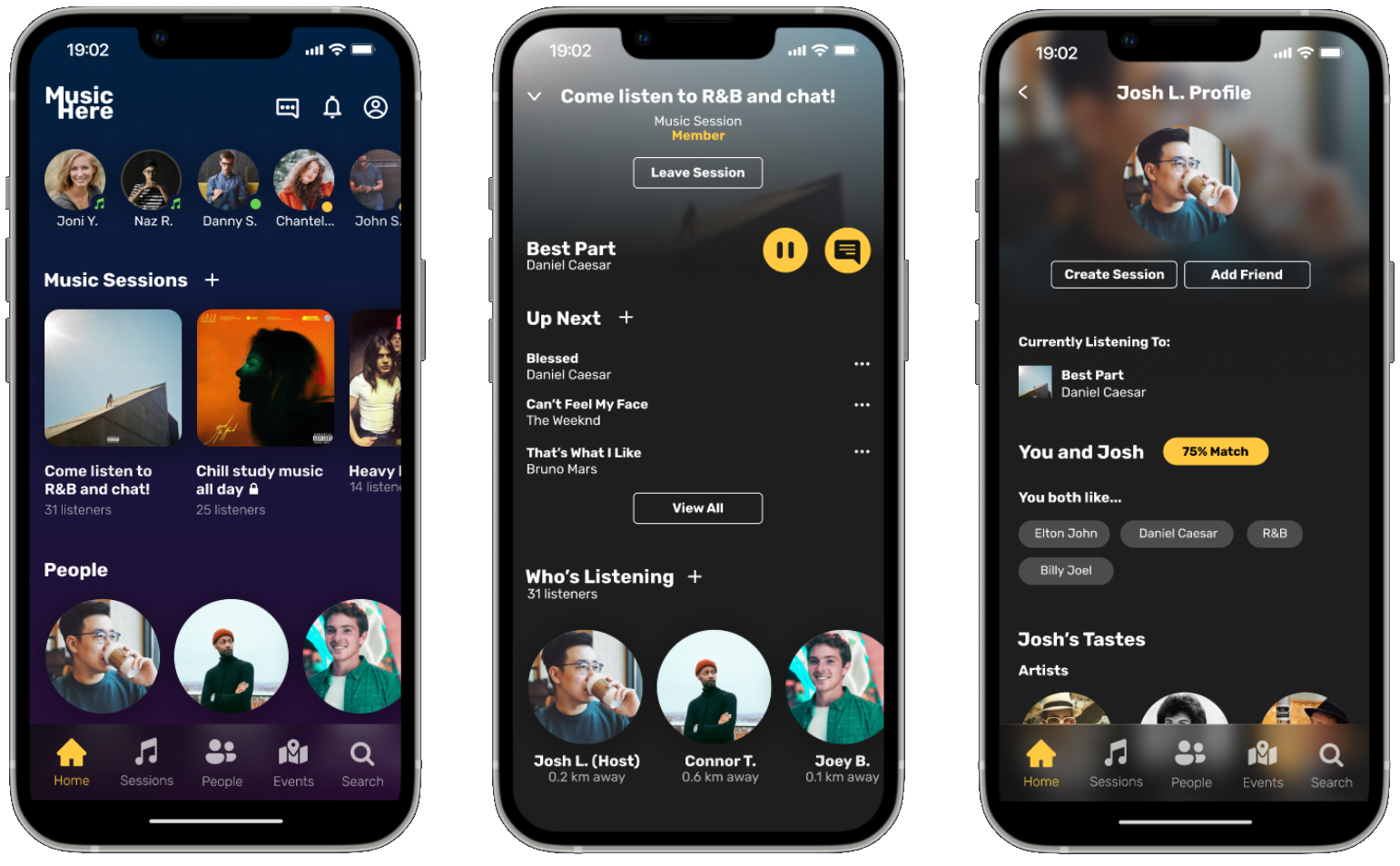
A social music app to connect with people over shared musical tastes
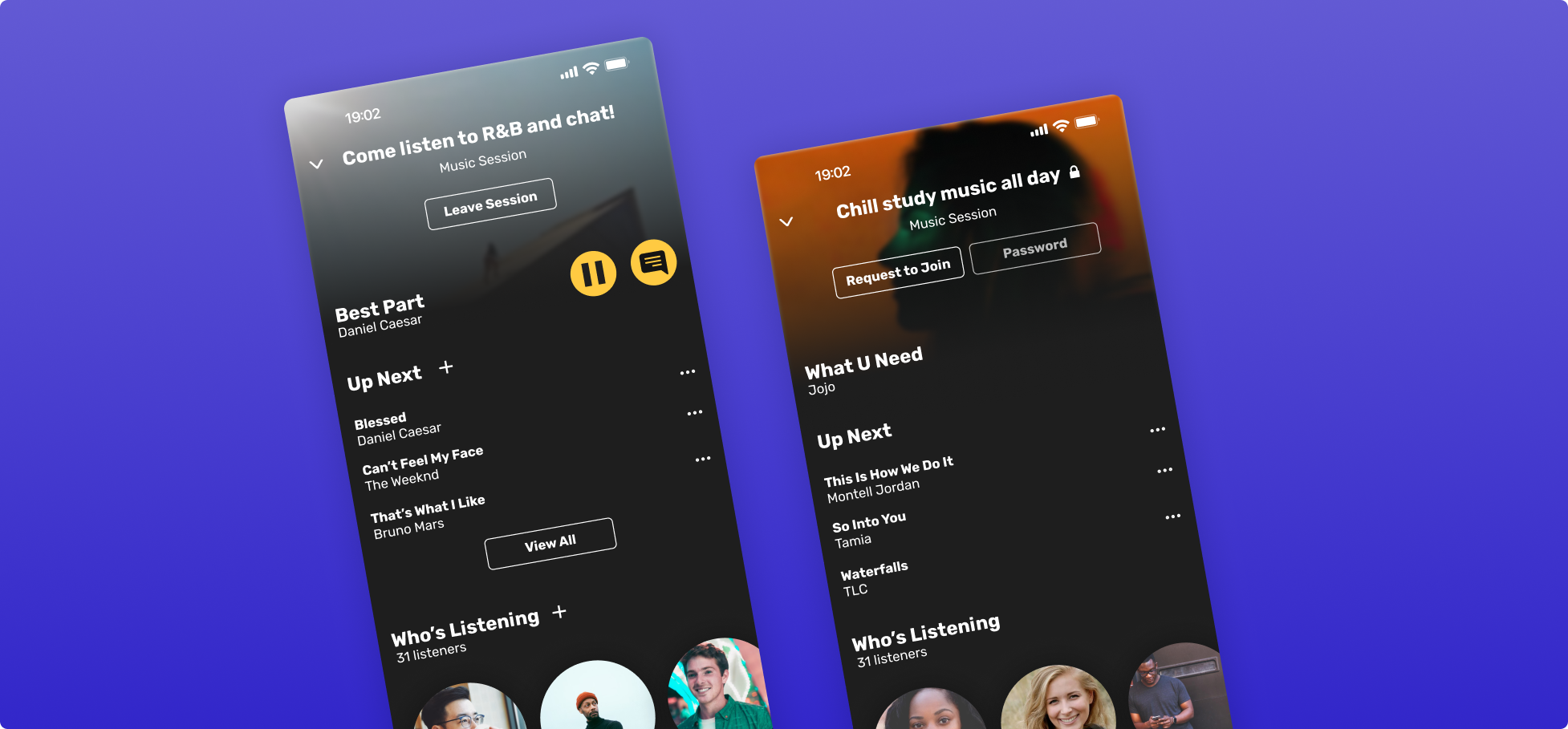
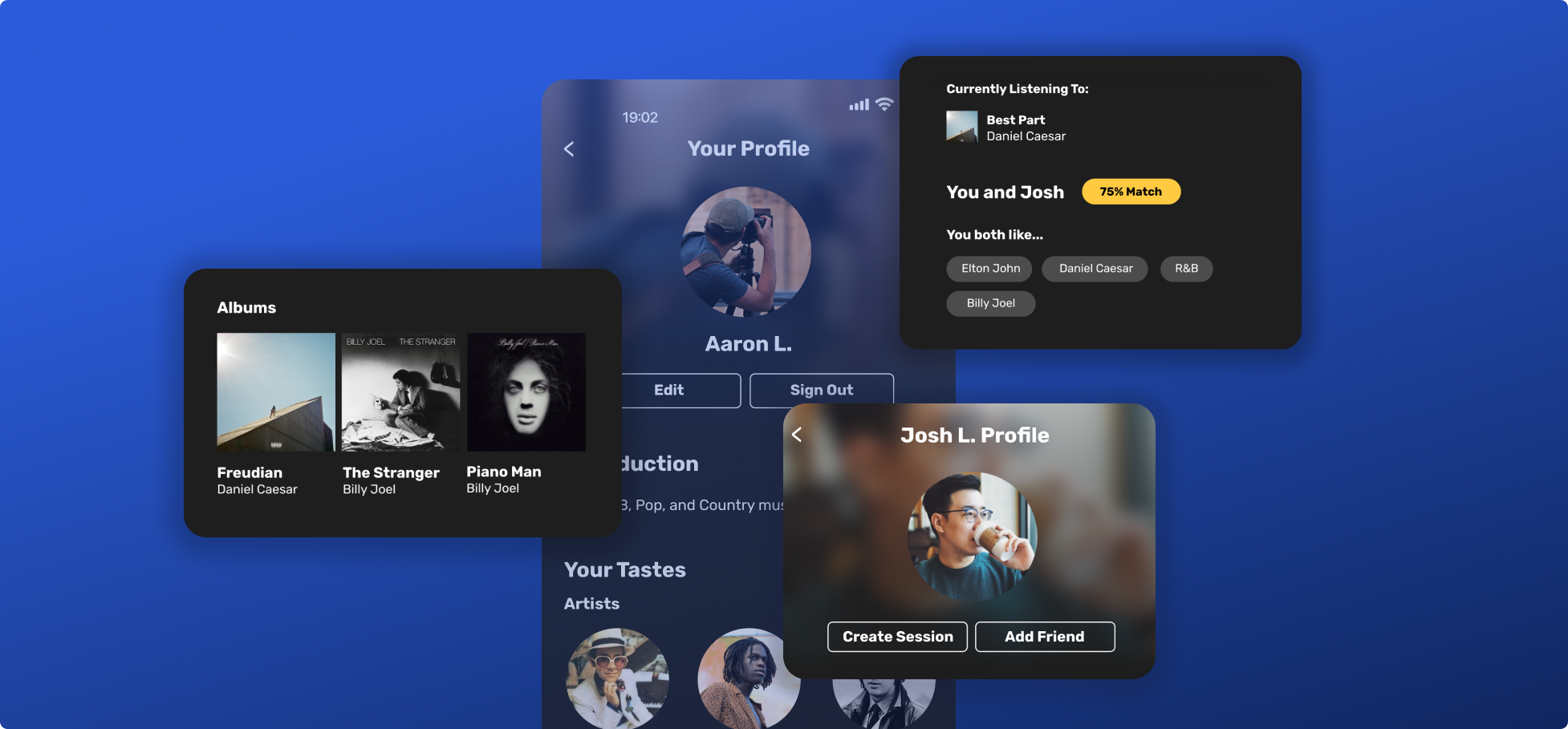

Discovering opportunities to create more social music experiences
The initial goal of this project was to identify current opportunities to integrate more social ways of experiencing music with others. To begin, a discovery interview was conducted to identify the specific enjoyments that motivate people to share music, as well as any barriers they may be facing on existing apps like Apple Music or Spotify.
The objectives were to understand why people enjoy their sharing musical tastes, and identifying the tools that they currently use to share music and identify pain points during their process.
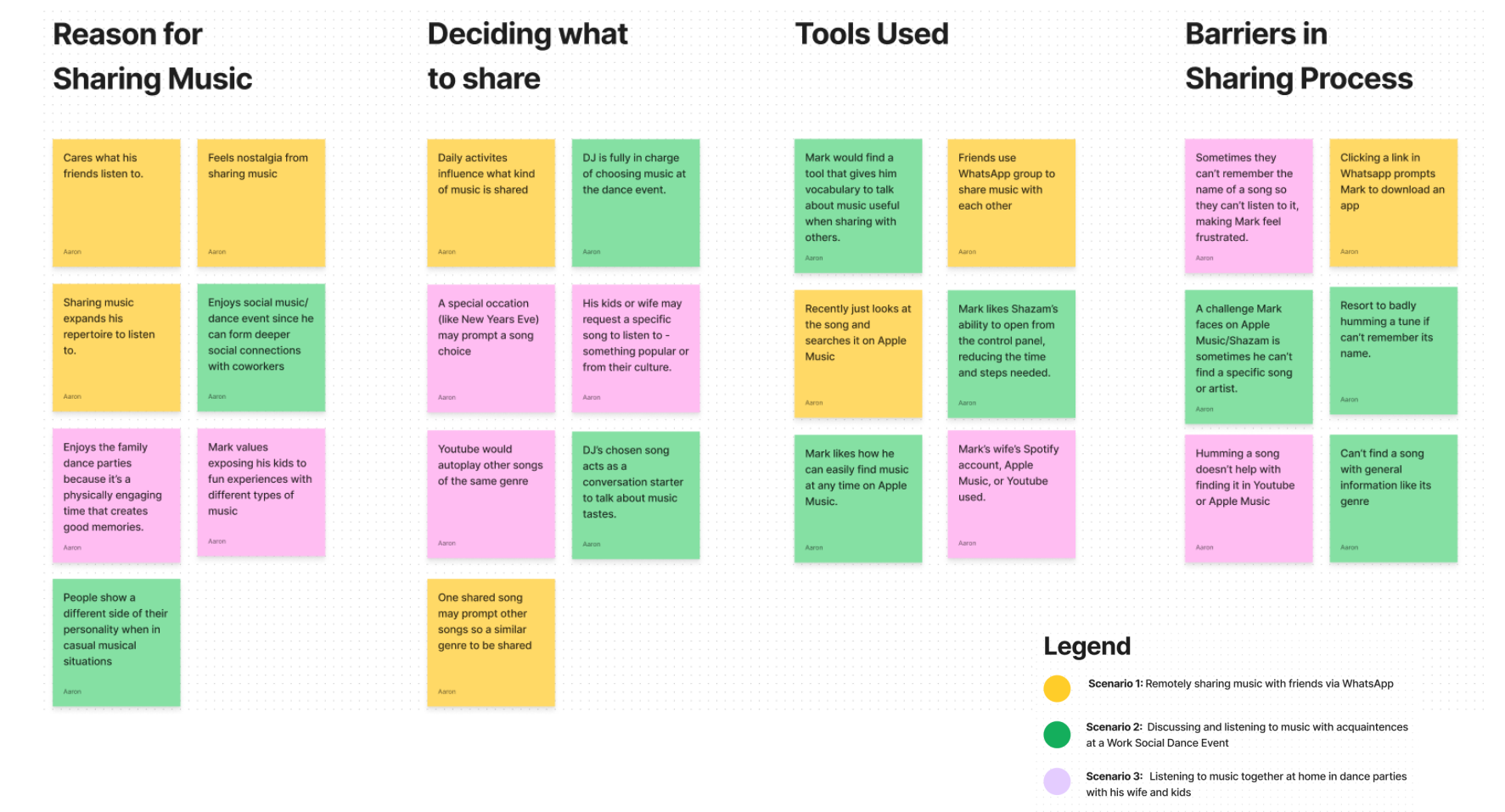
The research indicated that current music platforms such as Spotify or Apple Music do not adequately help users share and talk about music with nearby people; in particular, they lack features to help you connect with people around you whom you may not know. The main pain points included:
1. Lack of opportunity to approach people about their musical tastes in daily conversation
2. Users often want to bring up more songs to talk about, but can’t think of any in the moment
3. Current workflow to find + share songs in a conversation can be slow, interruptive, and sometimes requires multiple platforms
Therefore, the project's problem was defined: How might we design a digital solution to help users connect with new people over shared musical tastes?
Kicking off the design with a Collaborative Workshop
With the problem space defined, I began the designs by conducting an ideation workshop. The workshop, called "Crazy 8's", involved participants rapid sketching possible solutions to address the problem statement, with the goal of generating as many divergent ideas as possible, followed by dot-voting to gain alignment on prioritization. Three ideas were selected as the main functions that would be designed moving forward.
1. Create and Join Live Music Sessions. In these sessions, everyone listens to a live shared playlist, and users can add songs and chat with other members through a Group Chat.
2. Customize their Profile with Music Tastes, including songs, artists, genres, etc. Viewing each others' Profiles would give an overall Match Percentage calculated based on shared interests.
3. Create and Find Music-Themed Events. Through a map UI, users can find nearby Music-themed events to meet new people.
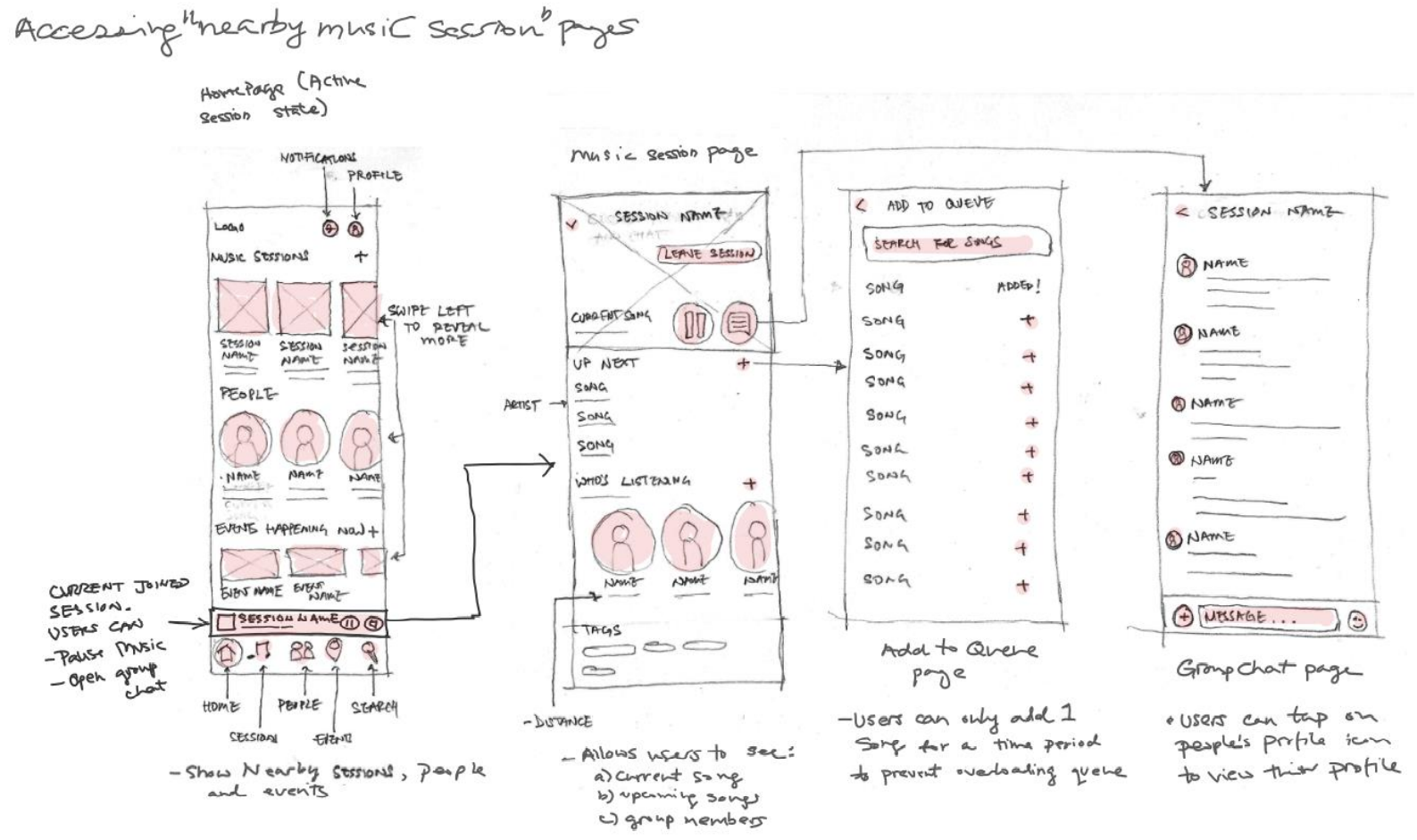
Designing IA and wireframing for the 3 core features
From here, user flows and paper mocks were drafted to gain a high level understanding of user journeys through these three main functions. Using Figma, a mid-fidelity prototype of the app was developed to use for the first round of formative user testing.
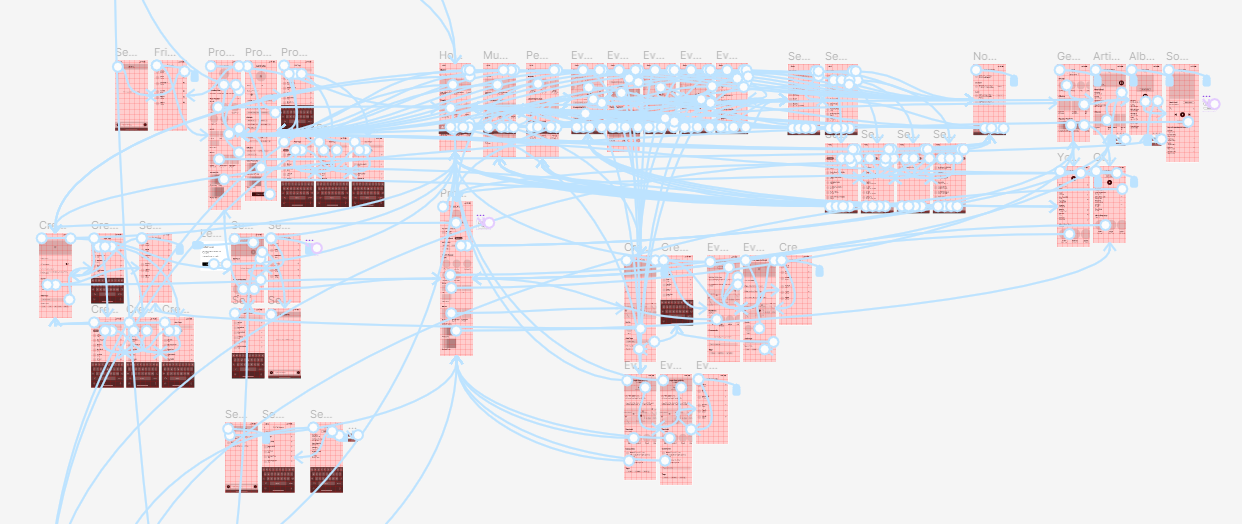
Main Finding: Users needed more control when managing their own Music Sessions
A usability test was conducted with 5 participants. Findings were synthesized and prioritized into actionable insights through a Rainbow Spreadsheet (Shown below). Similar observations across multiple users were highlighted with multiple colors, indicating a more pressing issue needing immediate attention.
One of the main issues that was discovered was that users were confused how much power other Music Session members could have in adding songs to the playlist - would they be able to add as many songs as they want, and would there be any limitations? This issue would need to be explored in the high fidelity prototype moving forward.
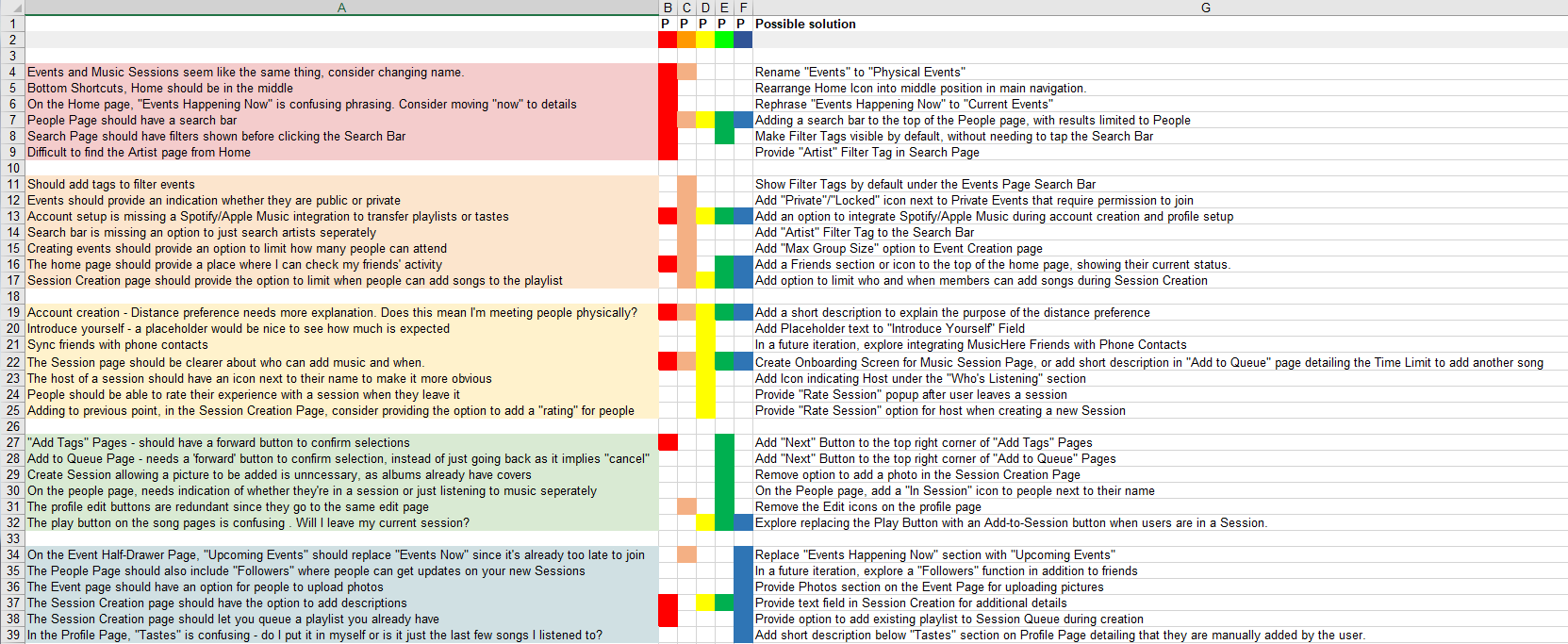
Providing more control over Music Sessions
The first round of validation research found that users were confused about the power of members when adding Songs to the Queue.
To address this, a timer was added to the Session, Session Creation, and Add-to-Queue pages.
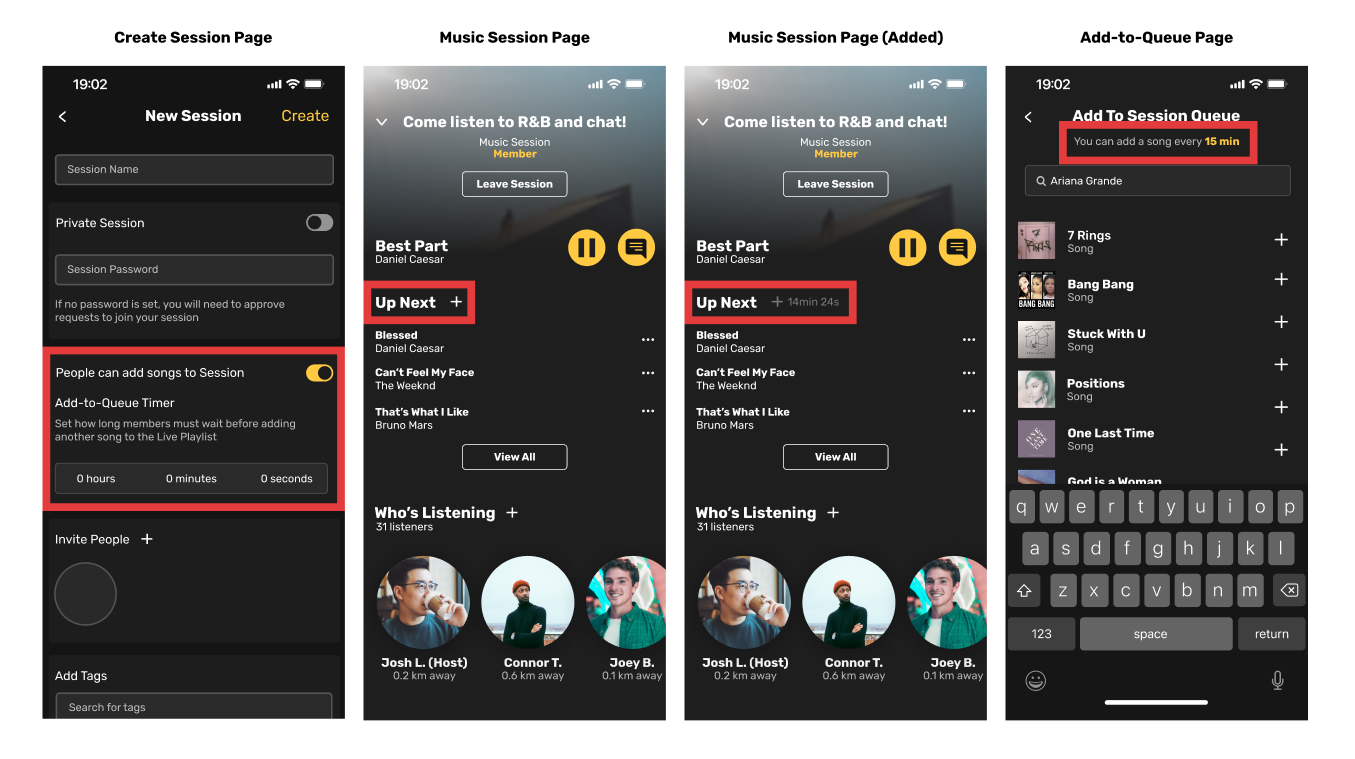
From here, I moved on to designing the brand identity of the solution - the final visual design of the UI is heavily influenced by existing music platforms such as Spotify. A deep and rich red-blue gradient is used as the main background to give a warm and musical feel to the app, with interactable elements using a bright yellow brand color.
Rubik was selected as the primary typeface. Its Sans-Serif letterform maintains professionalism and legibility, while its rounded edges provides an element of playfulness appropriate for a Social Music app.
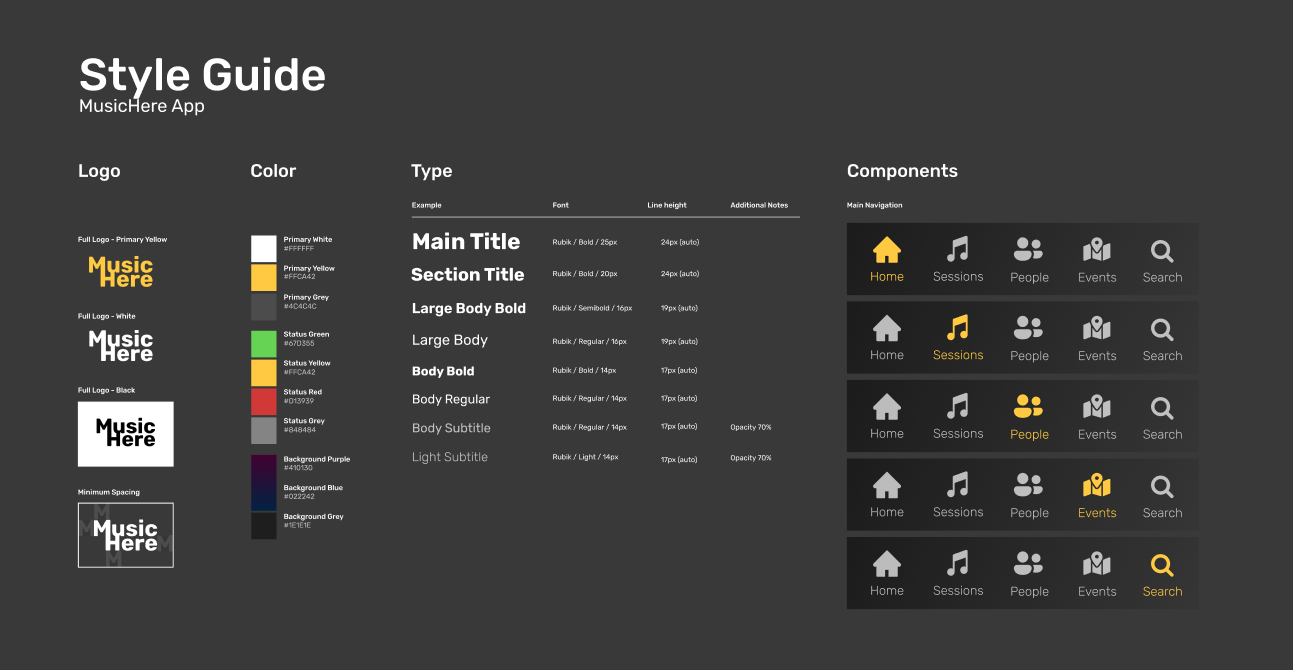
Asynchronous usability testing through Useberry was used for the second round of validation. 5 users were asked to complete core tasks including joining Music Sessions, editing Profile Tastes, and finding a nearby Event.
Heatmap data was used to evaluate problematic areas on the interfaces. Two main issues were identified, illustrated below. First, some users were tapping the Labels on items rather than their respective Images, indicating that they expected these areas to be a part of the interactable area.
Second, on the Profile page, most users attempted to tap a Profile Item to edit it, rather than using the Edit button at the top of the page. Potential suggested adjustment to improve was to extend the interactive Zone on Homepage and Add-to-Queue page items to allow users to tap Labels instead of Images/Icons.
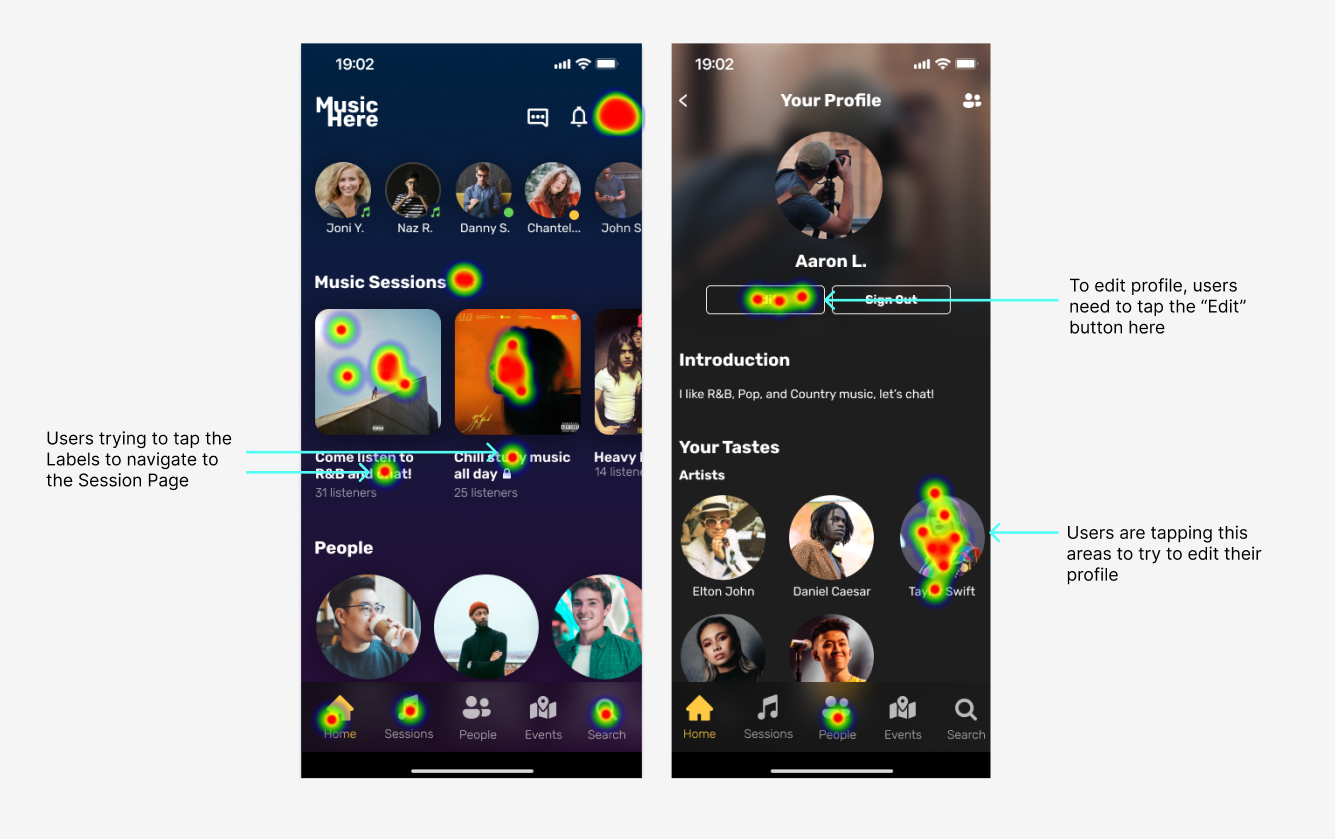
Potential suggested adjustments to improve was to extend the interactive Zone on Homepage and Add-to-Queue page items to allow users to tap Labels instead of Images/Icons, and following iOS Homescreen convention, when a user taps and holds an item on the Profile Page, a Remove Icon appears.
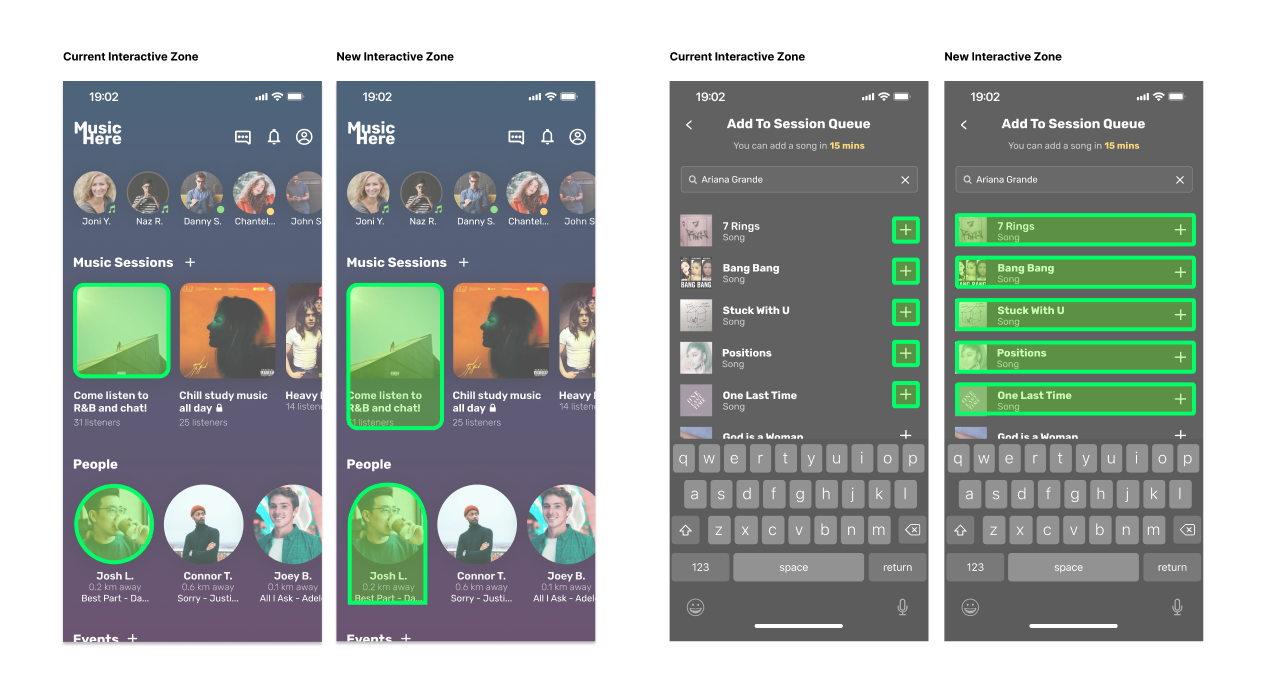
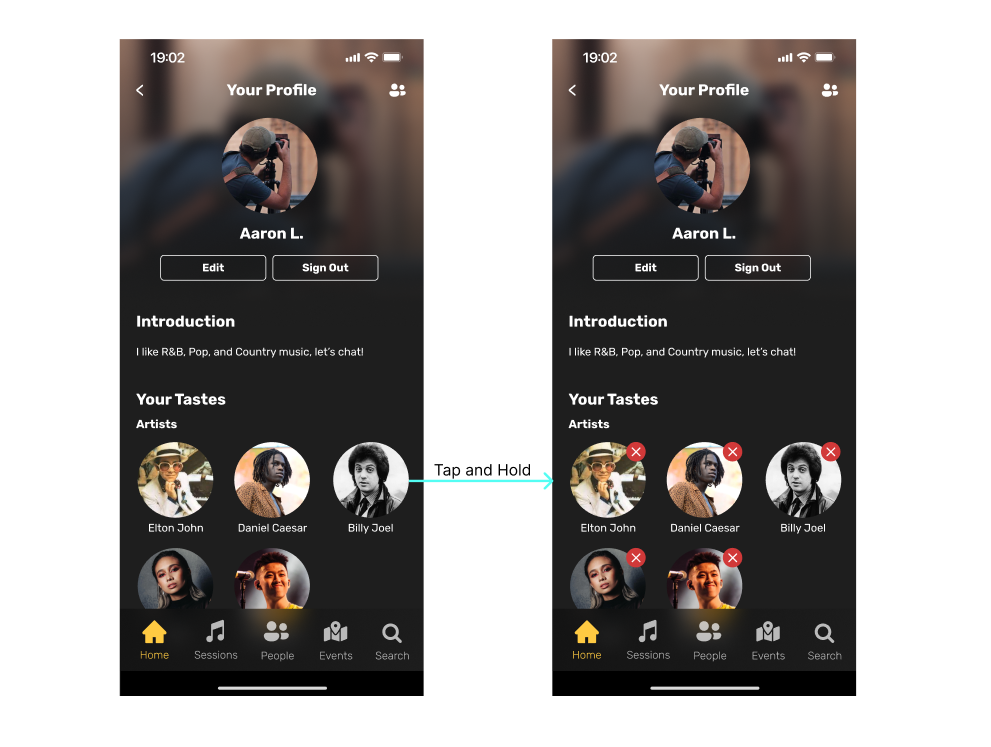
Music Sessions
Through the Music Session, users can add new Songs to the Playlist Queue, chat with Members, and access other peoples' profiles to connect with them.
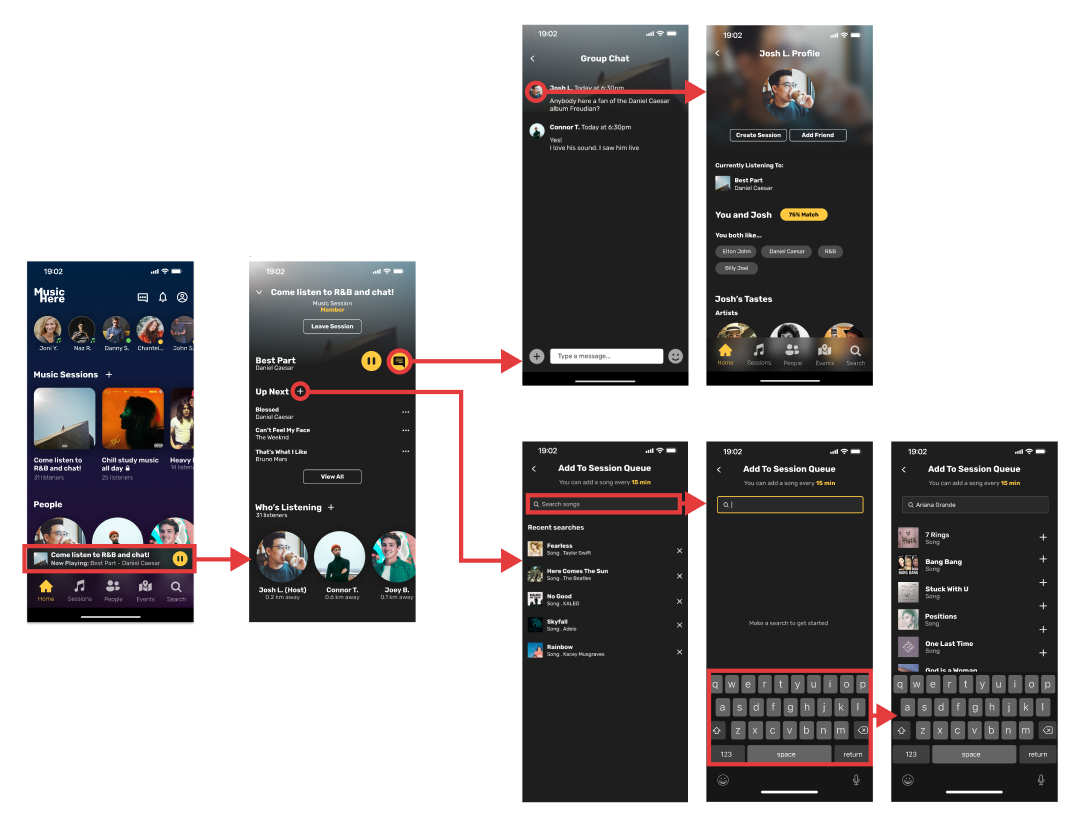
Onboarding Profile Creation
During Profile Creation, users can use the search bar to add tastes or link their new MusicHere Profile to an existing Spotify or Apple Music account to auto-populate their Musical Tastes.
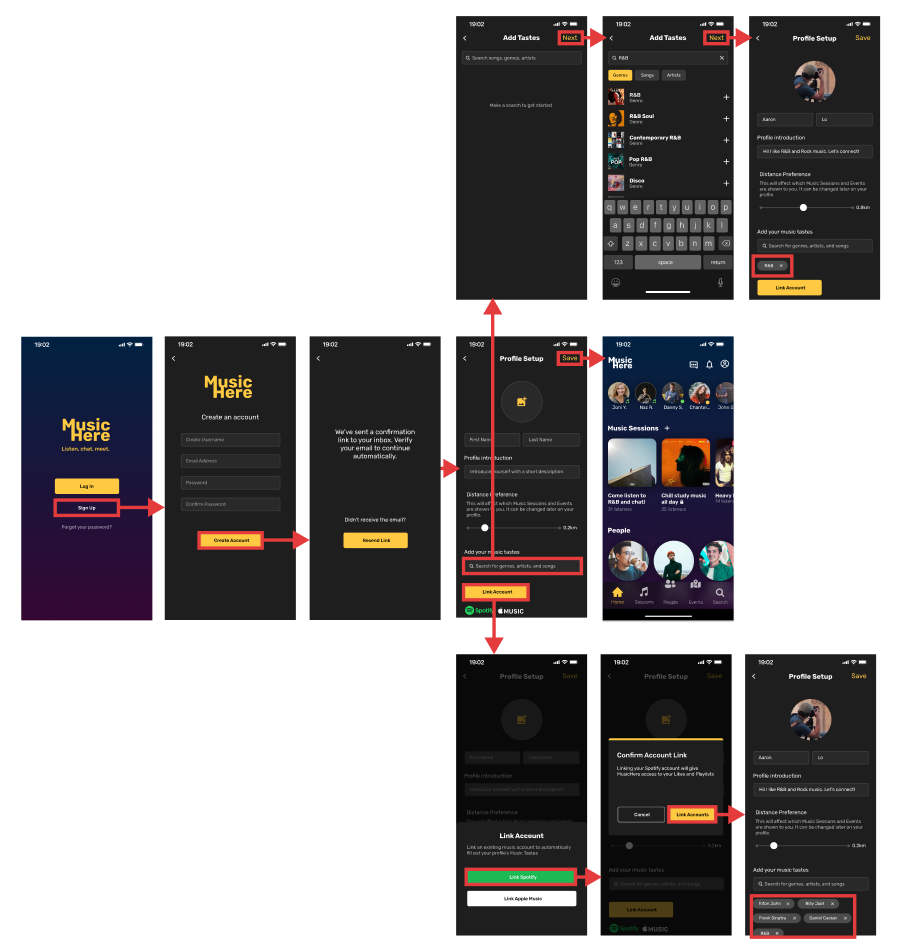
Creating a New Music Session
If users find somebody who they would like to connect with, they can create a session directly from that person's Profile page.
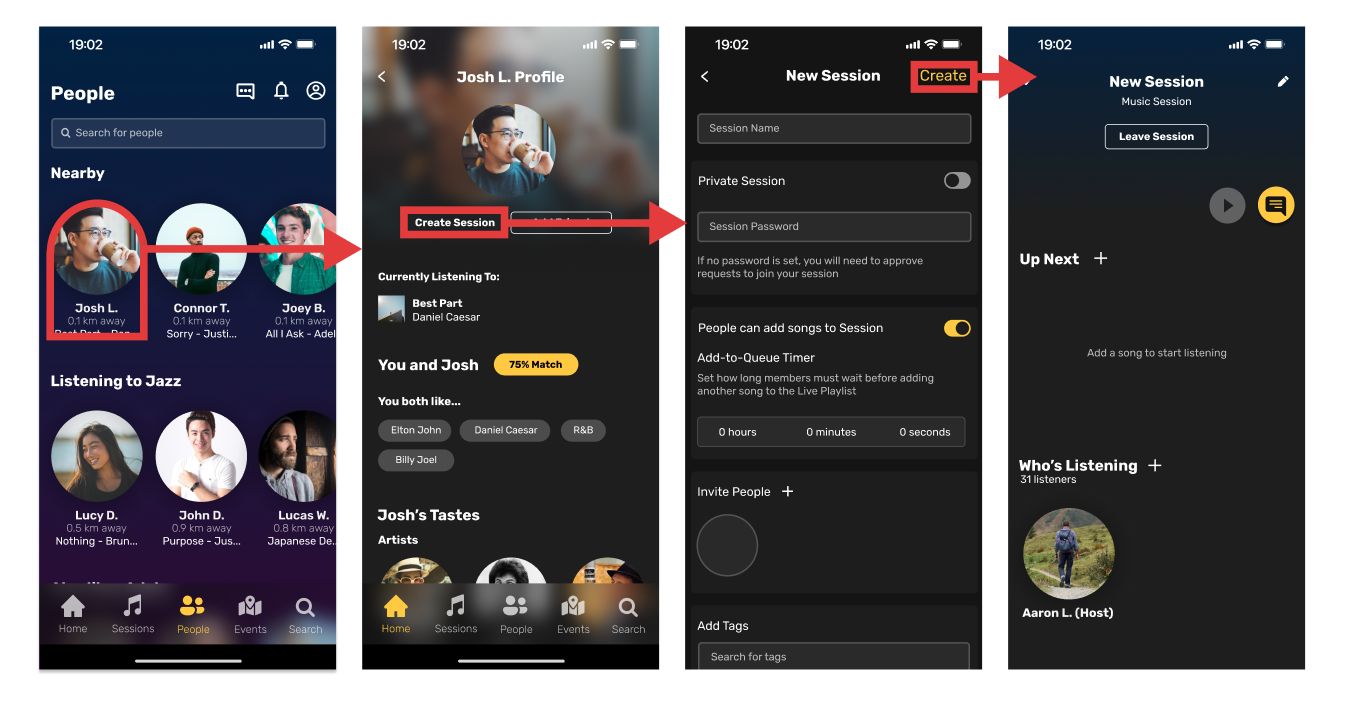
Browsing Events
The Events Page contains a collapsible drawer, allowing users to browse events using a variety of methods including a Search Bar, a Recommended Feed, or a Map.
